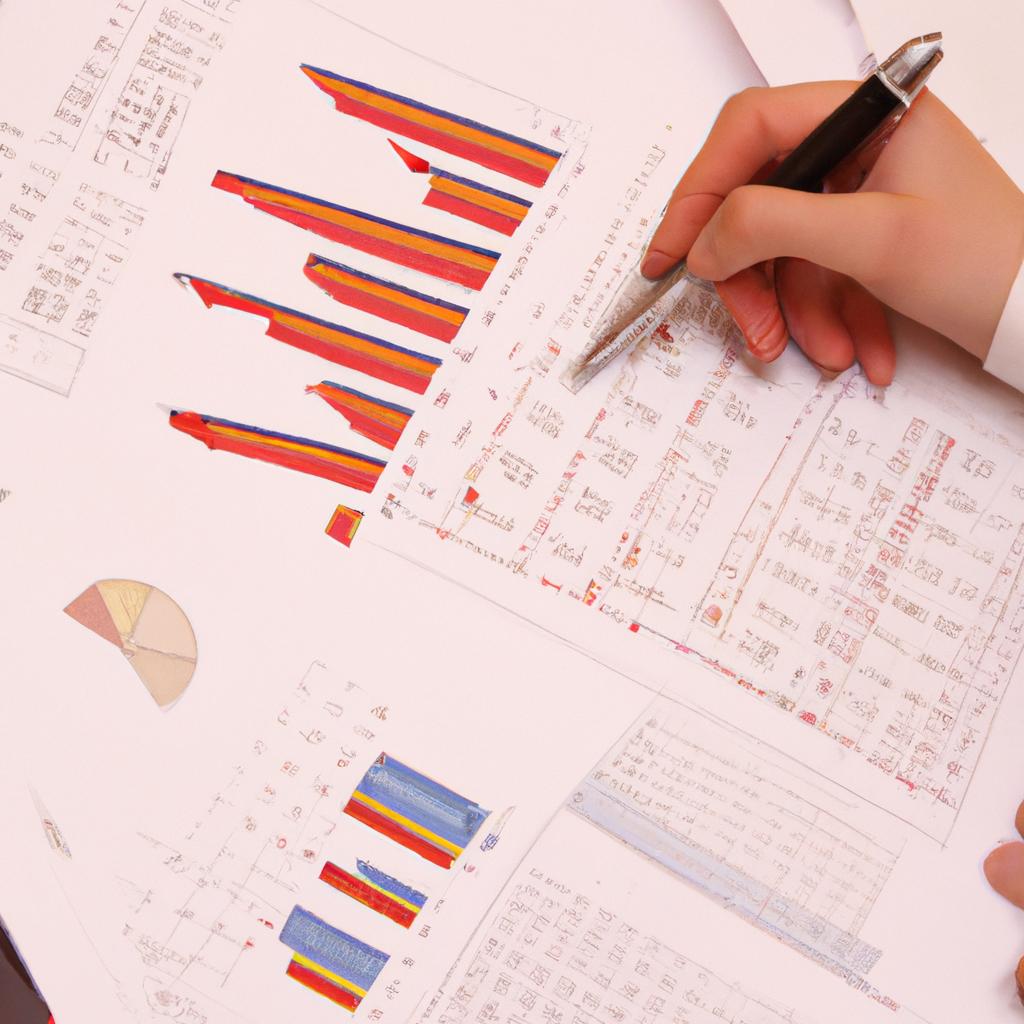Behavioral economics has emerged as a crucial field of study within social sciences organizations, shedding light on the various factors that influence decision-making and human behavior. This comprehensive overview aims to delve into the key principles of behavioral economics and their applications in organizational settings. By examining real-world examples and hypothetical scenarios, this article seeks to demonstrate how understanding behavioral economics can lead to more effective strategies for problem-solving, resource allocation, and employee motivation.
One compelling example is the case of a large multinational corporation struggling with high turnover rates among its employees. Traditional economic models would suggest that higher salaries or financial incentives should be sufficient to retain talented individuals. However, behavioral economics offers a different perspective by emphasizing the importance of non-monetary factors such as job satisfaction, work-life balance, and intrinsic motivation. Through an analysis of psychological biases and heuristics, this article will explore how leveraging these insights can help social science organizations create environments that foster employee engagement and reduce turnover rates.
Overview of Behavioral Economics
Overview of Behavioral Economics
Behavioral economics is an interdisciplinary field that combines insights from psychology and economics to understand how individuals make decisions. By recognizing that humans are not always rational decision-makers, behavioral economists seek to provide a more realistic understanding of economic behavior.
To illustrate the principles behind behavioral economics, let us consider a hypothetical scenario: Imagine you are at a grocery store intending to buy a bag of chips. As you approach the snack aisle, you notice two different brands offering similar products. Brand A is priced slightly lower than brand B. Logically, one would assume that most people would choose brand A because it provides better value for money. However, in reality, many consumers may still opt for brand B due to its attractive packaging or familiarity with the product.
This simple example highlights some key concepts within behavioral economics:
- Loss aversion: People tend to be more motivated by avoiding losses rather than achieving gains.
- Choice architecture: The way choices are presented can significantly influence decision-making.
- Framing effects: The context in which information is presented affects our perceptions and subsequent actions.
- Anchoring: Initial pieces of information (such as prices) anchor our judgments and guide subsequent decisions.
Table: Examples of Behavioral Economic Concepts
| Concept | Explanation |
|---|---|
| Loss aversion | People’s tendency to strongly prefer avoiding losses over gains |
| Choice architecture | Influence of how options are presented on decision-making |
| Framing effects | Impact of context on perception and subsequent actions |
| Anchoring | Initial reference point guiding judgment and subsequent decisions |
Understanding these concepts enables policymakers, marketers, and organizations to design interventions that nudge individuals towards making better choices. By incorporating the principles of behavioral economics into public policy initiatives or marketing strategies, social sciences organizations can effectively address societal challenges such as encouraging healthier behaviors or increasing sustainable practices.
The subsequent section will delve into the applications of behavioral economics in social sciences, highlighting how it can be utilized to address various real-world issues.
Applications of Behavioral Economics in Social Sciences
Building upon the overview of behavioral economics provided in the previous section, this section will delve into the diverse applications of this field within social sciences organizations. To illustrate its practicality, let us consider an example where a nonprofit organization aims to increase charitable donations through behavioral economic strategies.
One key application of behavioral economics is the use of nudges to influence decision-making. By subtly altering the environment or framing choices, individuals can be encouraged to make more socially desirable decisions. In the context of our example, the nonprofit organization could implement a default option that automatically includes a small donation with each purchase made on their website. Research has shown that such defaults can significantly increase overall donation rates as people are often inclined to stick with pre-selected options.
Additionally, incorporating social norms and peer influence can have a profound impact on behavior. Humans tend to conform to what they perceive as normal or acceptable within their social circles. Implementing strategies like highlighting how many others have already donated or showcasing testimonials from influential figures can create a sense of social pressure and encourage more individuals to contribute.
To further understand the various applications of behavioral economics in social sciences organizations, consider the following examples:
- Using loss aversion: Emphasizing potential losses rather than gains can motivate action. For instance, an environmental advocacy group may highlight the negative consequences for future generations if immediate steps towards sustainability are not taken.
- Harnessing scarcity effect: Creating a perception of limited availability increases perceived value and stimulates higher demand. A public health campaign might emphasize limited vaccine supplies to drive urgency among target populations.
- Leveraging cognitive biases: The anchoring bias, which involves relying heavily on initial information when making subsequent judgments, can be utilized by marketers offering discounts relative to artificially inflated prices.
Table: Examples of Behavioral Economic Strategies
| Strategy | Example |
|---|---|
| Default Option | Opt-in organ donation policies significantly increase donor registration rates. |
| Social Norms | Displaying energy usage comparisons to neighbors encourages conservation. |
| Loss Aversion | Framing climate change as a threat to personal well-being motivates action. |
| Scarcity Effect | Limited-time offers create a sense of urgency and drive consumer behavior. |
In conclusion, behavioral economics provides an array of tools that can be effectively applied within social sciences organizations. By understanding the cognitive biases and decision-making processes underlying human behavior, these organizations can design interventions that lead to positive outcomes.
Next section: The Role of Cognitive Biases in Decision Making
The Role of Cognitive Biases in Decision Making
Behavioral economics, with its focus on understanding the psychological and social factors that influence decision making, has found widespread applications in various fields of study. In social sciences organizations, behavioral economics offers valuable insights into human behavior and helps enhance organizational strategies and interventions to achieve desired outcomes. This section explores some key applications of behavioral economics in social sciences organizations.
One example of how behavioral economics is applied in social sciences organizations is through the use of choice architecture techniques. By manipulating the way choices are presented or framed, organizations can nudge individuals towards certain behaviors or decisions. For instance, a nonprofit organization seeking to increase charitable donations may employ default options by pre-selecting an amount for donation on their website’s giving page. Research shows that people tend to stick with defaults rather than actively making a different choice, resulting in increased donations.
Furthermore, behavioral economics provides crucial insights into consumer behavior analysis within social sciences organizations. Understanding consumers’ cognitive biases and heuristics allows organizations to design more effective marketing campaigns and tailor products or services to meet customers’ needs and preferences. For example, by employing scarcity tactics such as limited-time offers or displaying the number of items left in stock during online shopping experiences, businesses can tap into consumers’ fear of missing out (FOMO) and create a sense of urgency that prompts immediate purchases.
To illustrate further practical applications:
- Utilizing social norms: Social sciences organizations can leverage social norms to promote pro-social behavior among individuals within communities.
- Implementing rewards programs: Employing reward systems based on gamification principles encourages participation and engagement from stakeholders.
| Key Applications of Behavioral Economics |
|---|
| Choice architecture techniques |
| Consumer behavior analysis |
| Utilizing social norms |
| Implementing rewards programs |
In summary, behavioral economics plays a pivotal role in shaping strategies employed by social sciences organizations. By tapping into our inherent cognitive biases and leveraging these insights strategically, institutions can facilitate positive changes in decision making and behavior. The next section will delve into the relationship between cognitive biases and decision making, shedding light on how these biases influence our choices.
Transitioning into the subsequent section about “Behavioral Economics and Public Policy,” it is essential to explore how behavioral economics principles can be applied beyond social sciences organizations. Understanding the impact of individual behaviors on public policy formulation allows for more effective governance and societal progress.
Behavioral Economics and Public Policy
Section H2: Behavioral Economics and Public Policy
The Role of Cognitive Biases in Decision Making shed light on the various ways in which our cognitive biases can influence our decision-making processes. These biases have significant implications not only for individuals but also for organizations and governments when it comes to formulating effective public policies based on rational behavior. By understanding these biases, policymakers can design interventions that nudge individuals towards making better choices.
One example of how behavioral economics has influenced public policy is the implementation of default options in retirement savings plans. Traditional economic theory assumes that individuals will always act rationally and make optimal decisions regarding their financial well-being. However, research in behavioral economics has shown that people often suffer from present bias, a tendency to prioritize immediate gratification over long-term goals. To counteract this bias and encourage saving for retirement, many countries have introduced automatic enrollment programs where employees are automatically enrolled in a retirement plan unless they actively opt-out. This simple change has led to higher participation rates and increased savings among workers.
- Nudging citizens towards healthier food choices by placing fruits and vegetables at eye level in supermarkets.
- Using social norms to reduce energy consumption by providing households with feedback comparing their energy usage to that of similar households.
- Implementing “sin taxes” on alcohol and tobacco products as a means to deter excessive consumption.
- Designing organ donation systems using an opt-out approach rather than opt-in, thereby increasing donation rates significantly.
Table 1 below summarizes some key examples of behavioral economics techniques used in public policy:
| Technique | Example |
|---|---|
| Default Options | Automatic enrollment in retirement plans |
| Choice Architecture | Placing healthy foods at eye level |
| Social Norms | Feedback on energy usage compared to peers |
| Incentives | Sin taxes on alcohol and tobacco products |
In summary, behavioral economics has provided valuable insights into how cognitive biases can impact decision making. By applying these insights to public policy, governments and organizations have been able to design interventions that nudge individuals towards better choices. The examples discussed above highlight the effectiveness of techniques such as default options, choice architecture, social norms, and incentives in influencing behavior positively.
Transitioning into the subsequent section about “Challenges and Criticisms of Behavioral Economics,” it is important to acknowledge that while behavioral economics has made significant contributions to understanding human behavior, it is not without its challenges and criticisms.
Challenges and Criticisms of Behavioral Economics
Behavioral economics has gained significant attention in recent years, particularly for its application in public policy. However, it is not without its challenges and criticisms. In this section, we will explore some of the key challenges faced by behavioral economics and delve into the criticisms surrounding this field.
One example that highlights the challenges of applying behavioral economics in practice is the implementation of nudge policies. Nudge policies aim to influence people’s behavior through subtle changes in the way choices are presented, without restricting individual freedom of choice. For instance, a study conducted by Thaler and Sunstein (2008) examined how changing defaults can impact organ donation rates. By making organ donation an opt-out rather than an opt-in system, countries like Austria and Belgium have significantly higher organ donation rates compared to countries with opt-in systems such as Germany and France.
Despite the potential benefits of nudge policies, there are several challenges associated with their implementation:
- Ethical concerns: Critics argue that nudges may infringe upon personal autonomy and manipulate individuals’ decision-making processes.
- Effectiveness: The effectiveness of nudging interventions varies across different contexts and populations; what works in one situation may not necessarily work in another.
- Unintended consequences: There is a possibility that certain nudges could lead to unintended outcomes or reinforce existing biases.
- Lack of transparency: Critics contend that the use of behavioral insights by policymakers lacks transparency and accountability, potentially undermining democratic principles.
To further illustrate these challenges and criticisms, consider the following table:
| Challenges | Criticisms |
|---|---|
| Ethical Concerns | Manipulation |
| Effectiveness | Lack of Evidence |
| Unintended Consequences | Reinforcing Biases |
| Lack of Transparency | Undermining Democracy |
As we move forward, it becomes evident that understanding both the limitations and critiques surrounding behavioral economics is crucial for its effective application within social sciences organizations. In the subsequent section on “Implications for Organizational Behavior,” we will explore how these challenges and criticisms impact organizational decision-making processes, employee behavior, and overall performance. This analysis will provide valuable insights into the practical implications of behavioral economics in real-world settings.
By acknowledging and addressing these challenges, organizations can better navigate the complexities of integrating behavioral economics principles into their strategies, policies, and practices. Such an approach is essential to ensure that the potential benefits of this field are realized while mitigating any negative consequences.
Implications for Organizational Behavior
Having explored the challenges and criticisms associated with behavioral economics, it is crucial to understand its implications for organizational behavior. This section will delve into the practical applications of behavioral economics within social sciences organizations, highlighting how this framework can inform decision-making processes and enhance overall performance.
One illustrative example that showcases the potential impact of behavioral economics on organizational behavior involves a multinational corporation seeking to promote employee engagement and productivity. By incorporating insights from behavioral economics, such as understanding the role of incentives and framing effects, the organization could design more effective reward systems that motivate employees to perform at their best. For instance, instead of offering standard monetary bonuses based solely on individual performance metrics, the company could implement a system where employees are rewarded with additional vacation days or personalized benefits tailored to their preferences. This approach recognizes that individuals’ behaviors are influenced not only by financial considerations but also by psychological factors.
The implications of applying behavioral economics principles in organizational behavior extend beyond incentive structures. Here are some key areas where this framework can have a transformative effect:
- Decision-making processes: Incorporating nudges and choice architecture techniques can help improve decision quality and reduce biases.
- Employee motivation: Understanding intrinsic motivators like autonomy, mastery, and purpose can lead to greater job satisfaction and commitment.
- Team dynamics: Recognizing social influences and cognitive biases within teams enables better collaboration and problem-solving.
- Leadership strategies: Applying concepts such as priming and anchoring can enhance leadership effectiveness through increased influence and persuasion.
To further illustrate these implications, consider the following table showcasing specific examples:
| Area | Implication |
|---|---|
| Decision-making | Nudges can be used to encourage healthier choices among employees during lunch breaks. |
| Employee motivation | Offering flexible work arrangements allows individuals to experience greater autonomy. |
| Team dynamics | Implementing diversity training programs can reduce biases and increase team cohesion. |
| Leadership strategies | Utilizing anchoring techniques during negotiations can lead to more favorable outcomes. |
By embracing the principles of behavioral economics, organizations can tap into the potential of human decision-making processes and behaviors, ultimately improving their performance and effectiveness. This framework provides valuable insights that go beyond traditional economic theories, offering a comprehensive understanding of how individuals and groups operate within organizational contexts.
In light of these implications, it is evident that incorporating behavioral economics in organizational behavior holds significant promise for social sciences organizations seeking to optimize their functioning while acknowledging the complexities inherent in human behavior.




